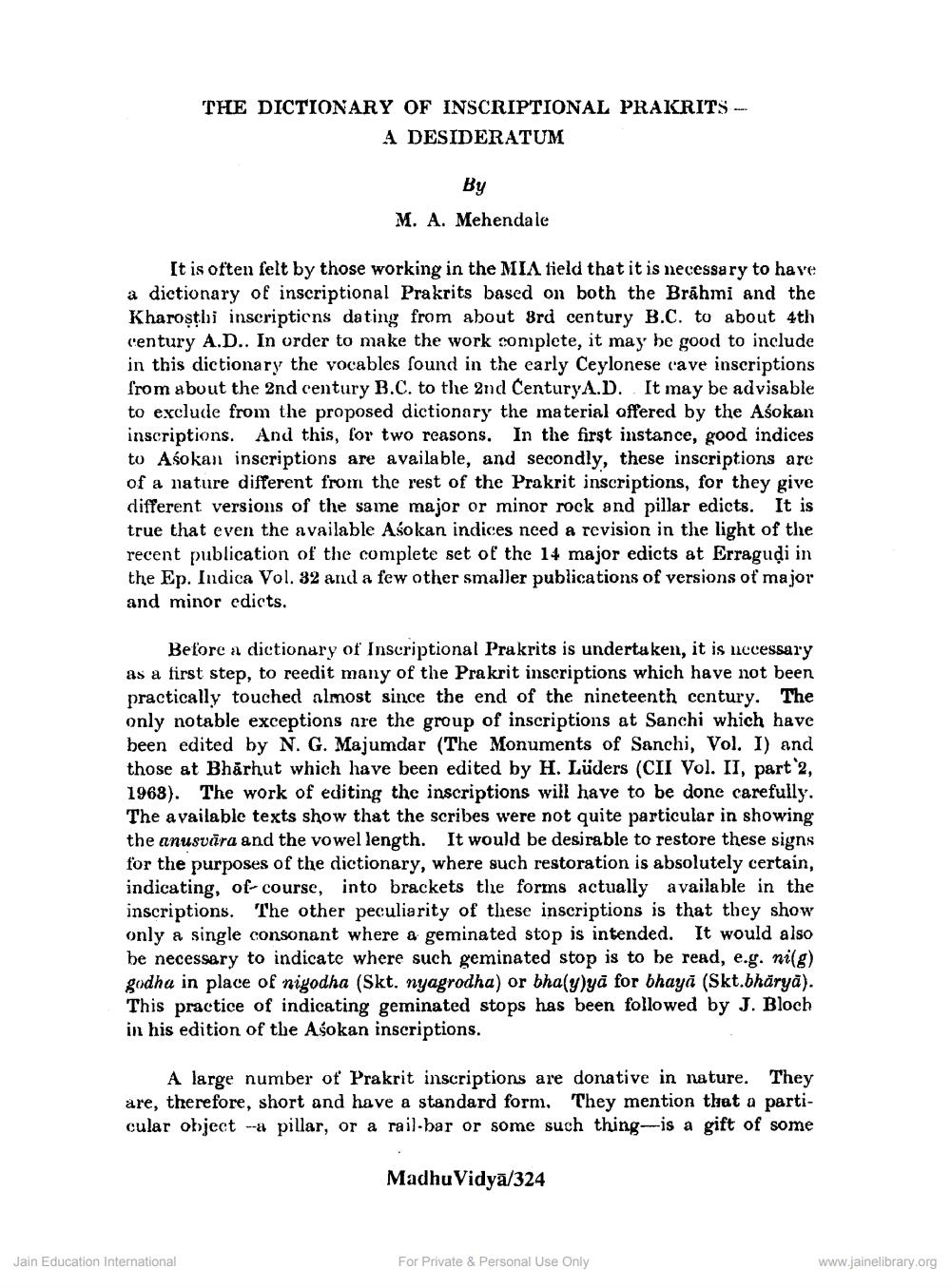________________
THE DICTIONARY OF INSCRIPTIONAL PRAKRITS ---
A DESIDERATUM
By
M. A. Mehendale
It is often felt by those working in the MIA field that it is necessary to have a dictionary of inscriptional Prakrits based on both the Brāhmi and the Kharosthi inscriptions dating from about 3rd century B.C. to about 4th century A.D.. In order to make the work complete, it may be good to include in this dictionary the vocables found in the early Ceylonese cave inscriptions from about the 2nd century B.C. to the 2nd CenturyA.D. It may be advisable to exclude from the proposed dictionary the material offered by the Asokan inscriptions. And this, for two reasons. In the first instance, good indices to Asokan inscriptions are available, and secondly, these inscriptions are of a nature different from the rest of the Prakrit inscriptions, for they give different versions of the same major or minor rock and pillar edicts. It is true that even the available Asokan indices need a revision in the light of the recent publication of the complete set of the 14 major edicts at Erragudi in the Ep. Indica Vol. 32 and a few other smaller publications of versions of major and minor edicts.
Before a dictionary of Inscriptional Prakrits is undertaken, it is necessary as a first step, to reedit many of the Prakrit inscriptions which have not been practically touched almost since the end of the nineteenth century. The only notable exceptions are the group of inscriptions at Sanchi which have been edited by N. G. Majumdar (The Monuments of Sanchi, Vol. I) and those at Bhårhut which have been edited by H. Lüders (CII Vol. II, part 2, 1968). The work of editing the inscriptions will have to be done carefully. The available texts show that the scribes were not quite particular in showing the anusvāra and the vowel length. It would be desirable to restore these signs for the purposes of the dictionary, where such restoration is absolutely certain, indicating, of course, into brackets the forms actually available in the inscriptions. The other peculiarity of these inscriptions is that they show only a single consonant where & geminated stop is intended. It would also be necessary to indicate where such geminated stop is to be read, e.g. nilg) godha in place of niyodha (Skt. nyagrodha) or bha(y)yā for bhayā (Skt.bhäryä). This practice of indicating geminated stops has been followed by J. Bloch in his edition of the Asokan inscriptions.
A large number of Prakrit inscriptions are donative in nature. They are, therefore, short and have a standard form. They mention that a particular object --pillar, or a rail-bar or some such thing is a gift of some
Madhu Vidyā/324
Jain Education International
For Private & Personal Use Only
www.jainelibrary.org




